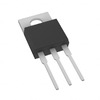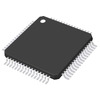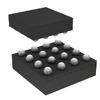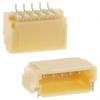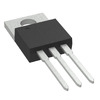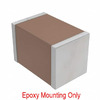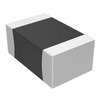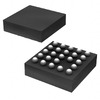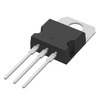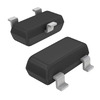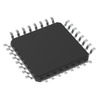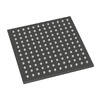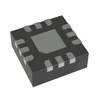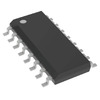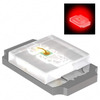Mastering the BD243 NPN Power Transistor for Power Applications
The BD243 transistor is a prominent NPN power transistor, renowned for its robust performance in diverse electronic applications. It stands out for its ability to handle substantial voltage and current levels, making it ideal for power-intensive tasks. This article delves into the intricate details of the BD243 series, exploring its specifications, practical applications, and how it exemplifies the integration of aspirations in advancing technology.Catalog

Overview of BD243 Series Transistors
The BD243 series, with models including BD243A, BD243B, and BD243C, embodies a versatile array of NPN power transistors housed in the TO-220 package. With a design that balances strength and functionality, these components serve important roles in both switching and amplification applications. Their capacity to manage a collector current up to 6A efficiently highlights their applicability across diverse industrial contexts. The BD243 supports voltages up to 45V, the BD243A allows up to 60V, the BD243B handles up to 80V, and the BD243C can sustain voltages as high as 100V. This range of voltage options gives you the flexibility to choose the exact model that matches circuit’s requirements, balancing performance and reliability to meet the need for precision.
Exploring Power Transistors
Power transistors perform roles as switches or amplifiers. These semiconductor devices, with their characteristic three terminals, adeptly handle collector currents beyond 1A. They come in NPN and PNP variations, each offering unique power and speed specifications tailored to different application needs. Examining NPN and PNP transistors reveals distinct advantages that cater to specific needs for speed or power in different contexts. NPN transistors are generally preferred for high-speed applications due to their superior electron mobility, while PNP transistors are better suited for high-power scenarios, capable of handling larger current loads.
When applying power transistors, careful consideration of thermal management and power efficiency is required. Effective heat dissipation, achieved through well-designed heat sinks and cooling strategies, helps maintain both device longevity and performance, especially in industrial settings where inadequate thermal management can lead to operational disruptions. Semiconductor material selection is key, as it affects the transistor's functionality, and factors like voltage ratings and switching frequencies can optimize performance across various applications.
BD243 Pin Configuration
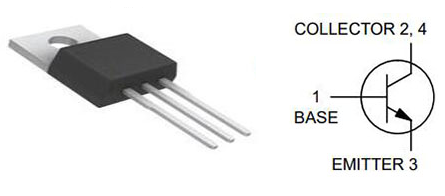
|
Pin No |
Part Name |
Description |
|
1 |
Base |
The Base controls the transistor. A small current between
the Base and Emitter allows a larger current to flow between the Collector
and Emitter, similar to how a small switch can control a big machine. |
|
2 |
Collector |
The Collector connects to the main power source and helps
get rid of heat, like a heat sink on a computer chip. This keeps the
transistor stable and efficient. |
|
3 |
Emitter |
The Emitter is the output. It releases charge to complete
the circuit, similar to a valve that lets liquid flow only when needed to
keep the system balanced. |
BD243 Symbol and Footprint

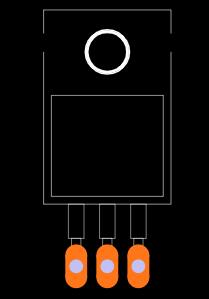
Features of the BD243
Composition and Structural Architecture
The BD243 is crafted with a focus on silicon material, leveraging an NPN bipolar junction transistor setup. This design aids in managing power dissipation, a factor that greatly appeals in environments prioritizing efficiency and longevity. The transistor's form and substance lend it an inherent sturdiness.
Power and Voltage Specifications
Uniquely, the BD243 can dissipate up to 65W, suiting it for applications where power demands are intensive. The transistor's collector-base voltage peaks at 55V, with a collector-emitter limit of 45V. Such specifications attest to its robustness, particularly valuable in diverse electronic systems that anticipate varied load demands. This design thoughtfully considers scenarios featuring common voltage fluctuations.
Capacity for Current Flow
With an emitter-base voltage maximum of 5V, this transistor supports a collector current capacity reaching 6A. Such capabilities are esteemed in applications necessitating substantial current, like motor control or power supply systems. The delicate act of balancing current flow with thermal management reveals itself as integral to fostering both device longevity and reliability.
Management of Thermal Conditions
Engineered for efficiency under a junction temperature of 150°C, the BD243 underscores the essence of appropriate cooling measures, such as the installation of heat sinks, to avert thermal overrun. Observations suggest that maintaining temperatures well beneath this threshold not only safeguards functionality but appreciably prolongs the device's operational life.
Frequency Response and Gain Characteristics
With a transition frequency of 3 MHz, the BD243 demonstrates proficiency in switching roles, an anticipated aspect in cutting-edge electronic design. The minimum forward current transfer ratio of 30 highlights its role in amplification applications, reassuring of its capability to maintain signal purity and amplification consistency.
Packaging and Practical Insights
Encased in a TO220 package, the BD243 benefits from enhanced heat dissipation due to the larger surface area, while also simplifying installation. This arrangement is favored in designs grappling with space constraints and thermal regulation needs. Industry frequently highlight the impact of package selection during the design cycle, which affects device performance and integration simplicity.
BD243 Technical Specifications
Technical details, characteristics, and parameters of the BD243, along with components that have similar specifications to the ON Semiconductor BD243TU.
|
Type |
Parameter |
|
Package / Case |
TO-220-3 |
|
Supplier Device Package |
TO-220-3 |
|
Packaging |
Tube |
|
Part Status |
Obsolete |
|
Base Part Number |
BD243 |
|
Transistor Type |
NPN |
|
Current - Collector Cutoff (Max) |
700µA |
|
Voltage - Collector Emitter Breakdown (Max) |
45V |
|
Mounting Type |
Through Hole |
|
Current - Collector (Ic) (Max) |
6A |
|
Operating Temperature |
150°C TJ |
|
Moisture Sensitivity Level (MSL) |
1 (Unlimited) |
|
Power - Max |
65W |
|
DC Current Gain (hFE) (Min) @ Ic, Vce |
15 @ 3A, 4V |
|
Vce Saturation (Max) @ Ib, Ic |
1.5V @ 1A, 6A |
Advantages of Leveraging BD243
Superior Current Gain and Bandwidth Balance
BD243 transistors stand out due to their remarkable current gain and bandwidth balance, which cater to a diverse array of amplification needs. In circuits aiming for efficiency and performance resilience, this balance aids in enhancing signal clarity and consistent operational quality over extended periods. A common application is in audio amplifiers, where audio fidelity takes precedence. Maintaining an equilibrium between these factors leads to minimal audio distortion and delivers purity in sound reproduction.
Eco-Friendly Profile
The designation of BD243 as both lead-free and RoHS compatible underscores its status as an environmentally considerate semiconductor. Adhering to rigorous international ecological standards, these traits promote a conscious approach to electronics manufacturing. Employing such components can notably decrease the ecological footprint while meeting modern compliance mandates and contributing to corporate social responsibility endeavors. It can elevate a company’s image among environmentally aware stakeholders.
Operational Proficiency and Extended Service Life
The BD243 excels due to its combination of low noise output and heightened efficiency, resulting in both superior performance and reduced power consumption, ultimately extending the lifespan of devices. Low noise is especially good in communication technology where precision and clarity cannot be compromised. You can rely on sustained, reliable performance, under demanding conditions where other components may falter.
Prolonged Durability through Robust Engineering
BD243’s design is inherently robust, promoting a lengthy operational life and thereby reducing the frequency of replacements and maintenance, which can minimize downtime. This endurance is beneficial in settings requiring uncompromising reliability, such as in industrial equipment or critical communication infrastructures. Over time, BD243's solid construction ensures system stability, even as it approaches its operational thresholds.
Applications and Impacts of BD243
Role in Enhancing Battery Management Systems (BMS)
BD243 transcends basic battery pack protection in Battery Management Systems. Its skillful current management champions extended battery lifespan and peak performance, a necessity in the electric vehicles and renewable energy storage. With sustainable industries on the rise, dissecting these components' roles offers valuable insights.
Precision in Motor Drivers
BD243’s command over high currents with refined precision makes it invaluable in motor driver circuitry. This trait holds in manufacturing and robotics domains, where sharp precision and robust efficiency are heavily weighted. The resilience of BD243 ensures consistent device performance despite fluctuating operational conditions, cutting down on system failures and downtimes.
Advancements in Battery Chargers
The burgeoning dependency on electronic gadgets escalates the need for sophisticated charging solutions. BD243 plays a part in modern power adapters, promoting accelerated and secure charging cycles.
Management of Industrial Load Switching
Within industrial environments, BD243 is extensively applied to manage switching loads under 6A. Its contribution to circuit protection and load management boosts operational safety and efficiency, mirroring the trend towards greater automation in industrial workflows. This point emphasizes the significance of deliberate component selection in crafting cost-effective and dependable systems.
Excellence in High-Power Audio Systems
Audio system engineering frequently hinges on the quality and dependability of elements like the BD243. High-power audio amplifiers depend on this transistor to deliver uncompromised high-fidelity sound.
Equivalents of the BD243
BD537, 2N5497, 2N6121, 2N6123, 2N6288, 2N6289, 2N6290, 2N6291, 2N6292, 2N6293, 2SC1107, 2SC1109, 2SD476, 2SD1412, BD291, BD293, BD295, RCA1C10, RCA1C14, 2SC1108, 2SC1110.
Exploration of NPN and PNP Transistors
Knowing the difference between NPN and PNP transistors is important for getting into electronics. These parts are used in many circuits, acting as amplifiers or switches, and they help make sure a device runs smoothly and reliably. A multimeter is a useful tool for checking transistors. By putting the positive lead on the Base (B) and the negative lead on the Emitter (E), you can find out not only the type of transistor but also if it’s working properly. For NPN transistors, you should see a voltage drop between 0.45V and 0.9V during the test. This range shows the transistor is in good working order. Testing transistors this way helps you understand how healthy the transistor is. When testing a PNP transistor, you’ll usually get an "OL" (Over Limit) reading, which shows that the current flows in the opposite direction compared to NPN transistors. Being able to read these results is helpful for troubleshooting and repairs. Using these testing methods can help identify common issues in audio amplifiers and power electronics.
Package for BD243

BD243 Manufacturer Information
Onsemi, formerly known as ON Semiconductor, is a distinguished American provider specializing in semiconductors for a variety of applications. The company's strong reputation is bolstered by its diverse portfolio, which includes power management and signal management devices. It plays an influential role in the global electronics market by catering to multiple sectors, including automotive and industrial, while driving technological progress with its innovative solutions. Onsemi's strategic role in the semiconductor market showcases its capacity to keep pace with swiftly changing technological landscapes. The company's dedication to optimizing efficiency, reliability, and performance has earned it a favorable reputation across a wide range of fields. Onsemi is highly engaged with sustainability, reflecting a global movement towards environmentally conscious practices. This dedication is evident in the creation of energy-efficient products that aim to minimize ecological impact. As the company looks ahead, its unwavering commitment to both innovation and sustainability is anticipated to drive advancements in green technology sectors, resonating with global environmental goals and evolving market needs.
Datasheet PDF
BD243A Datasheets:
Lead Frame Dimensions 29/Nov/2007.pdf
BD243B Datasheets:
About us
ALLELCO LIMITED
Read more
Quick inquiry
Please send an inquiry, we will respond immediately.
Frequently Asked Questions [FAQ]
1. What roles does BD243 fulfill in electronics?
The BD243 transistor, an NPN high-power bipolar type, finds its niche in amplifying and switching tasks. Its hallmark features, stability and efficiency, make it a preferred choice among various circuits, especially in scenarios that require substantial current gains and durable performance. Its adaptability in fields like motor control and power regulation highlights its broad range of use.
2. What temperature range can BD243 endure during operation?
With the ability to function in temperatures up to 150°C TJ, the BD243 thrives in conditions where managing heat is important. Its admirable thermal tolerance lets it maintain efficiency in rigorous environments. This trait is often a draw for seeking longevity and dependability in high-power components.
3. What extent of power can BD243 manage?
Withstanding up to 65W, BD243 becomes a favored option for setups requiring notable power, such as audio amplification systems.
4. What varieties of power transistors exist?
Power transistors broadly fall into two categories: bipolar junction transistors (BJTs) and field-effect transistors (FETs). BJTs excel in delivering high current density and are effective in amplification roles, whereas FETs provide high input impedance. Grasping each type's strengths allows for their adept deployment across diverse electronic pursuits.
5. How can one determine whether a transistor is NPN or PNP?
A multimeter is employed to ascertain the transistor type. In an NPN transistor, the multimeter often displays a voltage drop ranging from 0.45V to 0.9V, while for a PNP transistor, it indicates "OL" (Over Limit). This technique not only identifies the transistor type but also exemplifies a basic troubleshooting method in electronic repairs and maintenance.
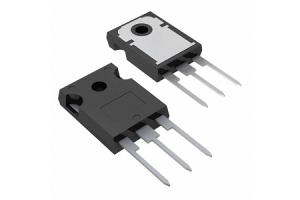
TIP142 Transistor: Pinout, Equivalent, and Datasheet
on November 14th

Exploring the BCP56 Transistor: Features, Pinout, and Datasheet
on November 14th
Popular Posts
-

What is GND in the circuit?
on January 1th 3226
-

RJ-45 Connector Guide: RJ-45 Connector Color Codes, Wiring Schemes, R-J45 Applications, RJ-45 Datasheets
on January 1th 2786
-

Understanding Power Supply Voltages in Electronics VCC, VDD, VEE, VSS, and GND
on November 19th 2552
-

Fiber Connector Types: SC Vs LC And LC Vs MTP
on January 1th 2244
-

Comparison Between DB9 and RS232
on January 1th 1861
-

What Is An LR44 Battery?
Electricity, that ubiquitous force, quietly permeates every aspect of our daily lives, from trivial gadgets to life-threatening medical equipment, it plays a silent role. However, truly grasping this energy, especially how to store and efficiently output it, is no easy task. It is against this background that this article will focus on a type of coin cell battery that may seem insignificant on the...on January 1th 1829
-

Understanding the Fundamentals:Inductance Resistance, andCapacitance
In the intricate dance of electrical engineering, a trio of fundamental elements takes center stage: inductance, resistance, and capacitance. Each bears unique traits that dictate the dynamic rhythms of electronic circuits. Here, we embark on a journey to decipher the complexities of these components, to uncover their distinct roles and practical uses within the vast electrical orchestra. Inductan...on January 1th 1786
-

CR2430 Battery Comprehensive Guide: Specifications, Applications and Comparison to CR2032 Batteries
What is CR2430 battery ?Benefits of CR2430 BatteriesNormCR2430 Battery ApplicationsCR2430 EquivalentCR2430 VS CR2032Battery CR2430 SizeWhat to look for when buying the CR2430 and equivalentsData Sheet PDFFrequently Asked Questions Batteries are the heart of small electronic devices. Among the many types available, coin cells play a crucial role, commonly found in calculators, remote controls, and ...on January 1th 1769
-

What Is RF and Why Do We Use It?
Radio Frequency (RF) technology is a key part of modern wireless communication, enabling data transmission over long distances without physical connections. This article delves into the basics of RF, explaining how electromagnetic radiation (EMR) makes RF communication possible. We will explore the principles of EMR, the creation and control of RF signals, and their wide-ranging uses. The article ...on January 1th 1756
-

Comprehensive guide to hFE in transistors
Transistors are crucial components in modern electronic devices, enabling signal amplification and control. This article delves into the knowledge surrounding hFE, including how to select a transistor's hFE value, how to find hFE, and the gain of different types of transistors. Through our exploration of hFE, we gain a deeper understanding of how transistors work and their role in electronic circu...on November 19th 1747
